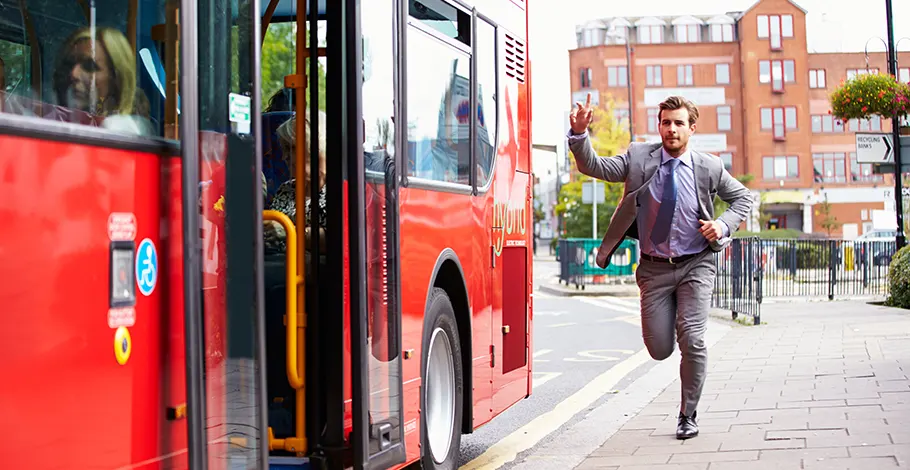In an era where our daily commutes have become an inextricable part of our routines, there lies a hidden opportunity to transform this segment of our day into a catalyst for health and well-being. The concept of active commuting—embracing walking, cycling, or public transportation as alternatives to the traditional, sedentary car ride—presents a compelling avenue for not only enhancing personal health but also contributing positively to the environment.

With a wealth of research underscoring the myriad benefits, ranging from reduced health risks such as cancer and heart disease to improved mental well-being and productivity, active commuting emerges as a practical and beneficial choice.
Research indicates that individuals who engage in active commuting methods, such as walking or cycling to work, tend to experience lower rates of obesity and cardiovascular diseases compared to those who rely on passive modes of transportation like driving. [1]
This guide aims to shed light on how integrating simple, yet effective, modes of transportation into your daily commute can pave the way for a healthier lifestyle. Through expert insights, real-life testimonials, and a pragmatic approach, we explore the multifaceted advantages and provide actionable tips for those looking to make a positive change.
Welcome to the path of “Stay Healthy Commuting: Walking, Cycling & Bus Tips”—where every step, pedal, or bus ride leads you closer to a healthier, happier you.
Walking Tips

Walking for Good Health. Shutterstock Image
Walking is one of the simplest and most accessible forms of exercise, and it can easily be incorporated into our daily commute. Not only does walking improve physical health, but it also boosts mental well-being and reduces stress. To make the most of walking during your commute, consider the following tips:
- Choose Walking-Friendly Routes: Opt for routes that are pedestrian-friendly, with sidewalks and designated crosswalks. Avoid busy roads with heavy traffic whenever possible.
- Set Realistic Walking Goals: Start with small distances and gradually increase your walking time as you build stamina. Aim for at least 30 minutes of brisk walking per day, which can be divided into shorter intervals if needed. Front Public Health [2] studies reveal that brisk walking positively impacts the physical fitness, balance, and life satisfaction of older adults.
- Use Walking Accessories:Invest in comfortable walking shoes that provide adequate support and cushioning. Additionally, wear reflective gear or bright clothing, especially when walking during low-light conditions or at night.
- Incorporate Walking Breaks: If your commute involves long distances, break up your walk with short rest stops or incorporate walking breaks into your schedule. This can help prevent fatigue and make the journey more enjoyable.
Cycling Tips

Tips for Bicycle Commuting. Shutterstock Image
Cycling is another excellent option for commuting, offering a convenient and eco-friendly alternative to driving. Not only does cycling improve cardiovascular health and muscle strength, but it also reduces carbon emissions and congestion on the roads. To make your cycling commute safe and enjoyable, consider the following tips:
- Proper Bike Maintenance: Regularly inspect your bike for any signs of wear and tear, such as loose bolts or worn brake pads. Keep your tires properly inflated and lubricate the chain as needed to ensure smooth operation.
- Use Cycling Safety Gear: Always wear a properly fitting helmet to protect against head injuries in the event of a fall or collision. Additionally, equip your bike with front and rear lights, as well as reflective clothing or accessories to increase visibility, especially when cycling at night.
- Plan Bike-Friendly Routes: Familiarize yourself with bike lanes and cycling routes in your area, and plan your commute accordingly. Consider using navigation apps or online maps that prioritize bike-friendly paths and avoid busy roads whenever possible.
- Utilize Bike-Sharing Programs: If you don't own a bike or prefer not to commute with your own, consider using bike-sharing programs available in many cities. These programs offer a convenient and affordable way to access bicycles for short-term use.
Bus Tips

Bus Tips for Healthy Commuting. Shutterstock Image
Taking the bus is a practical, cost-effective and environment friendly way to commute, offering numerous health benefits along the way. While sitting for extended periods on a bus may seem inactive, there are still ways to stay healthy and active during your journey. Here are some tips for making the most of bus commuting for your health:
- Maximize Standing Time: If space allows, consider standing instead of sitting during your bus ride. This can help engage your leg muscles and burn extra calories compared to sitting passively.
- Bring Healthy Snacks and Water: Pack nutritious snacks such as fruits, nuts, or granola bars to keep you fueled and satisfied during your commute. Stay hydrated by bringing a reusable water bottle and drinking water regularly throughout the journey.
- Incorporate Stretches or Exercises: Take advantage of the space available on the bus to perform simple stretches or exercises while seated. This can help improve circulation, prevent stiffness, and reduce the risk of muscle tension or cramps.
- Practice Hygiene and Safety Measures: Maintain good hygiene by washing your hands regularly and avoiding touching your face while traveling on public transport. Follow safety guidelines such as wearing a face mask and maintaining physical distance from other passengers to minimize the risk of illness. Recent findings in CDC Travelers Health underscore the importance of infection prevention measures in public transportation to safeguard commuters' health.
General Tips for Healthy Commuting
In addition to specific tips for walking, cycling, and bus commuting, there are several general strategies that can help promote health and well-being during your daily commute:
- Importance of Hydration and Nutrition: Prioritize hydration by drinking plenty of water throughout the day, especially before, during, and after your commute. Pack healthy snacks and meals to fuel your body with essential nutrients and avoid relying on convenience foods or sugary drinks. [3]
- Incorporate Healthy Habits: Use your commute as an opportunity to practice healthy habits such as mindfulness or relaxation techniques. Take deep breaths, listen to calming music, or engage in positive visualization to reduce stress and promote mental clarity.
- Stay Active During Breaks: If your schedule allows, take short breaks during your commute to stretch your legs, take a brief walk, or perform gentle exercises. This can help counteract the effects of prolonged sitting and boost energy levels throughout the day.
- Make Commuting Enjoyable: Find ways to make your commute more enjoyable and fulfilling, whether it's listening to your favorite podcast, reading a book, or connecting with fellow commuters. By viewing your commute as an opportunity for personal growth or relaxation, you can transform it from a mundane task into a positive experience.
The Environmental Perks of Active Commuting
Active commuting is not only a pathway to personal health but also a stride toward environmental conservation. By opting for bicycles over cars, we significantly diminish traffic congestion, thereby reducing our collective carbon footprint. The ripple effects are profound—less traffic leads to lower levels of air and noise pollution, both notorious for their adverse impact on our physical and mental well-being.
Research further supports that a shift towards walking, cycling, and the use of public transportation contributes to a noticeable decrease in carbon emissions. This conscious choice not only fosters a healthier lifestyle for ourselves but also cultivates a more sustainable and livable world for future generations. [4]
Engaging in active commuting is, therefore, a powerful statement of ecological stewardship, illustrating how individual actions can contribute to a larger environmental solution.
Final Thoughts
In conclusion, staying healthy during your daily commute is not only possible but also beneficial for your overall well-being. Whether you choose to walk, cycle, or take the bus, there are numerous strategies you can implement to make your commute a healthier and more enjoyable experience.
By prioritizing physical activity, nutrition, and mindfulness, you can turn your daily journey into an opportunity to improve your health and vitality. So, the next time you head out for your commute, remember these tips and make the most of your time on the move. Stay healthy, stay active, and enjoy the journey!







 This article changed my life!
This article changed my life! This article was informative.
This article was informative. I have a medical question.
I have a medical question.
 This article contains incorrect information.
This article contains incorrect information. This article doesn’t have the information I’m looking for.
This article doesn’t have the information I’m looking for.